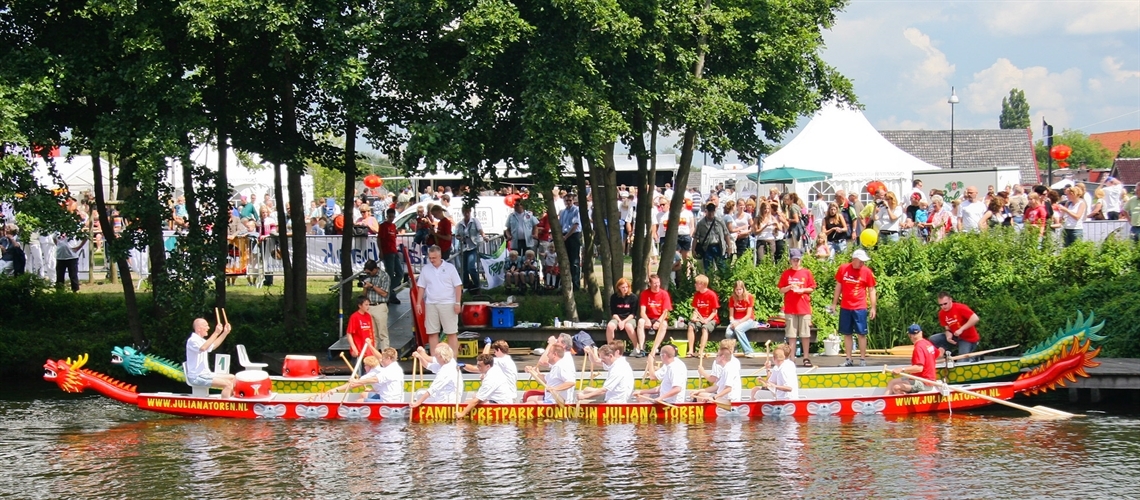Productive
2030 Goal: Local tourism and jobs

Ard van der Leeuw
We need parks and spaces along our rivers to support crowd-drawing events like dragonboat races.
To increase tourism and entertainment on Chicago’s rivers, we need new parks with performance spaces, expanded riverfront trails and water taxi service that connect neighborhoods, and revised land use policies that support compatible, river-friendly uses.
“We can develop stronger connections by having boats go further up and down the river. Instead of just touring architecture downtown, boats could connect people to unique neighborhood culture.”
—Focus group participant
“We could get more for our investments if we consider all 12 months! Minnesota and Quebec embrace winter with riverfront activities.”
—Focus group participant
We will encourage local entrepreneurs to offer an array of river-based concessions: waterfront restaurants and cafes with food and drink reflective of our diverse neighborhoods, recreational experiences such as yoga and BBQ classes, and places to rent and store equipment like kayaks and fishing poles. Creating more formal ways for people to influence riverfront programming, such as new Park Advisory Councils for riverfront parks, will engage a broad range of stakeholders in activating our rivers. These activities harness the economic benefit from having inviting riverfronts and living rivers, and build support for further protecting and improving ecological conditions.
The sky’s the limit for expanding river tours beyond downtown: Tours on the Calumet and South Branch of the Chicago rivers could educate participants about our region’s unique ecology and geology, Native American history, the I&M Canal, Underground Railroad, Great Migration, Industrial Revolution and even the Clean Water Act. Expanding water taxi service beyond Ping Tom Park on the South Branch would make site-hopping between downtown, Chinatown, Bridgeport, Pilsen and Little Village a reality. Throughout the river system, more and more riverfront businesses—from breweries to offices—can provide boat docks. This would go hand-in-hand with the creation of in-river parks, perfect for fishing and paddling, created by remediating stretches of the rivers that are not navigable to larger boats.

Townsquare Media Albany
Riverfront spaces should be able to support temporary concessions, like food trucks, as well as more permanent ones like restaurants and kayak rentals.
Making it happen
- Develop and pilot a broader array of riverfront tours in an expanded geography.
- Create interactive guides to existing neighborhood tourism options.
- Convene a working group of riverfront property owners to explore strategies for cultivating more active programming and enabling concessions.
- Expand water taxi service southward beyond Ping Tom Park.
- Include performance space and infrastructure for concessions in new or revamped riverfront open space.
- Explore options for centralized management and revenue options to support riverfront programming and tourism.
Key players
Chicago Dept. of Transportation, Amtrak, Tour boat industry, Chicago Dept. of Planning and Development, Chicago Dept. of Business Affairs and Consumer Protection, Choose Chicago, Chicago Park District, Forest Preserves of Cook County, Chicago Dept. of Cultural Affairs and Special Events, Chicago Architecture Foundation, Chicago History Museum
Our rivers, our role
- Explore existing tourist sites on our rivers: the Bridgeport Art Center, McCormick Bridgehouse & Chicago River Museum, and sites throughout the I&M Canal National Heritage Corridor.
- When planning events like farmers’ markets, craft fairs, drone races, Movies in the Park and more, look for riverfront settings to enhance the experience. Both the Chicago Park District and Forest Preserves of Cook County are open to hosting events planned and operated by outside organizations.
Back to goals